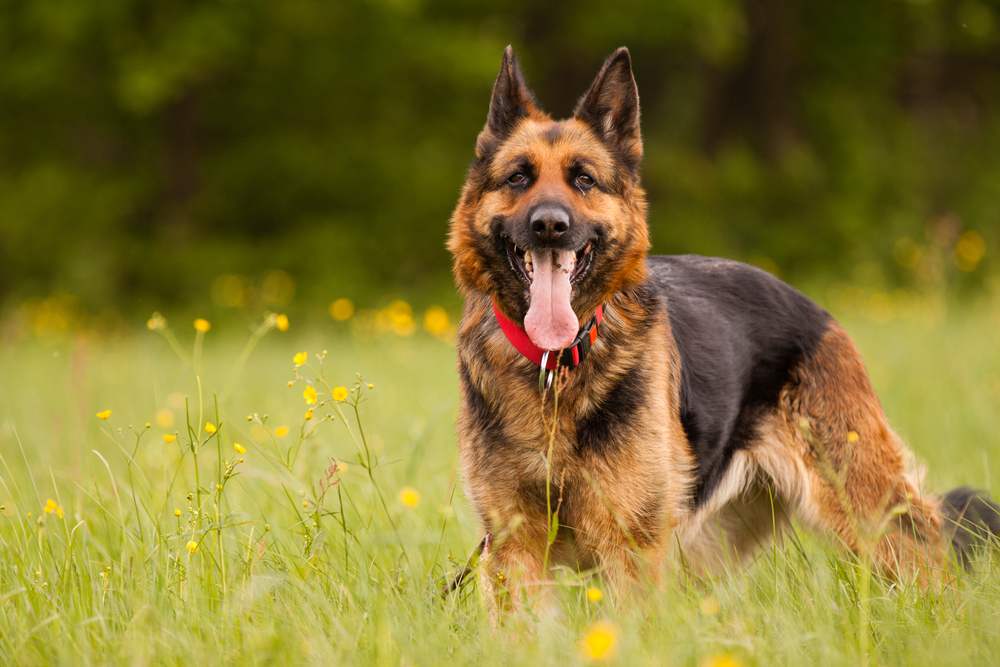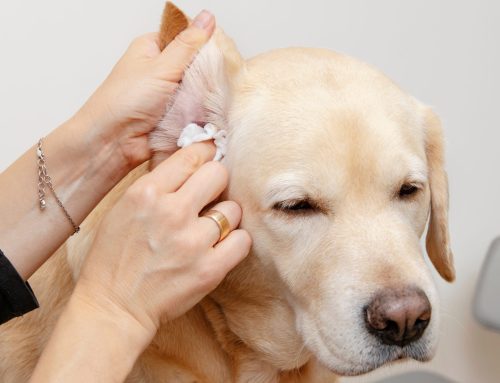What is canine hip dysplasia?
Canine hip dysplasia is a developmental disorder where the hip joint does not fit together properly. This improper development leads to instability that can lead to osteoarthritis. It is most common in large breed dogs, but can be seen in dogs of any size or breed, and occasionally even in cats.
What causes canine hip dysplasia?
Canine hip dysplasia is primarily a genetic disease. However, other factors can also contribute to the condition, including:
- Nutrition — If large-breed puppies don’t eat a specifically formulated diet, their bones and muscles grow at different rates, leading to joint diseases such as hip dysplasia.
- Weight — Overweight dogs can develop more hip joint changes than those at a healthy weight. To help prevent your dog from developing hip dysplasia complications, work with your veterinarian to help your pet maintain a lean body condition.
- Hormones — New evidence suggests that large-breed dogs who are spayed or neutered too young may experience a bone and muscle growth disparity, which can contribute to hip dysplasia. The team at Village Veterinary Hospital continues to evaluate the latest data related to this issue and can help you make an informed decision, based on your pet’s specific needs.
- Exercise — Excessive exercise in puppies younger than 3 months of age may accelerate the development of arthritis associated with hip dysplasia.
What are the signs of canine hip dysplasia?
Dogs affected by hip dysplasia may not exhibit signs until arthritic changes develop later in life. This disorder’s signs may include:
- Abnormal sitting positions
- Bunny hopping when running
- Stiffness, difficulty standing or walking, especially after resting
- Difficulty navigating stairs
- Difficulty or reluctance to jump on or off elevated surfaces
- Decreased activity
- Cracking or popping noises from the hip joints
How is canine hip dysplasia diagnosed?
The signs of hip dysplasia can be discovered in a routine wellness exam and have been diagnosed in puppies as young as 2 months of age; however, the veterinarians typically see the signs of hip dysplasia in dogs between 6 and 24 months of age. Our Village Veterinary Hospital team can perform specialized palpation techniques to evaluate your pet’s hip joint laxity, but these tests alone are not sufficient for diagnosing hip dysplasia. Digital X-ray imaging is the best medical test for diagnosing hip joint deformity, and sending the X-rays to a boarded veterinary radiologist confirms the diagnosis. Some pets need to be sedated to obtain the best views of their hips, because extending their hips can be painful.
How is canine hip dysplasia managed?
Once your dog is diagnosed with hip dysplasia, our Village Veterinary Hospital team considers the many available options to treat your furry pal’s disorder. Depending on your dog’s age and their condition’s severity, our team may recommend one or more of the following management strategies:
- Medical management — In many cases, medical management is sufficient to address canine hip dysplasia and manage the osteoarthritis that develops. Treatment consists of a multimodal approach that may include:
-
- Weight management — Keeping an ideal weight is extremely important for dogs with hip dysplasia or other joint issues as this decreases the load on the joints.
- Exercise — Low- to moderate-level daily exercise improves joint health and mobility, facilitating weight management.
- Medications — We often prescribe medications, such as nonsteroidal anti-inflammatories (NSAIDs), to help alleviate pain associated with secondary osteoarthritis.
- Supplements — Joint supplements, such as omega-3 fatty acids, glucosamine, and chondroitin, may also be helpful in hip dysplasia management.
- Advanced surgical options — In severe cases of hip dysplasia and osteoarthritis, advanced surgical options, such as total hip replacement or femoral head osteotomy, can be performed by a board-certified veterinary surgeon. Our team at Village Veterinary Hospital will determine if medical management is insufficient, and recommend an appointment with a specialist if warranted.
How is canine hip dysplasia prevented?

You can’t prevent canine hip dysplasia. However, you can help reduce your dog’s hip dysplasia risk by following these tips:
- Choosing a reputable breeder — When purchasing a puppy, choose a reputable breeder who evaluates their breeding dogs for issues such as hip dysplasia.
- Providing proper nutrition — Ensure you feed your puppy a diet specifically formulated to their nutritional needs.
- Limiting exercise — Avoid exercising your puppy excessively until they reach skeletal maturity. This age can vary depending on your dog’s breed, so your veterinarian will make a specific recommendation based on your pet.
- Spaying and neutering at the right age — Ask our team what age is best to have your puppy spayed or neutered to prevent hormonal complications.
Canine hip dysplasia is a developmental disorder that involves hip instability and degeneration. Follow our tips to help reduce your dog’s risk for developing this condition. To have your puppy evaluated for hip dysplasia, contact our Village Veterinary Hospital team.



















Leave A Comment